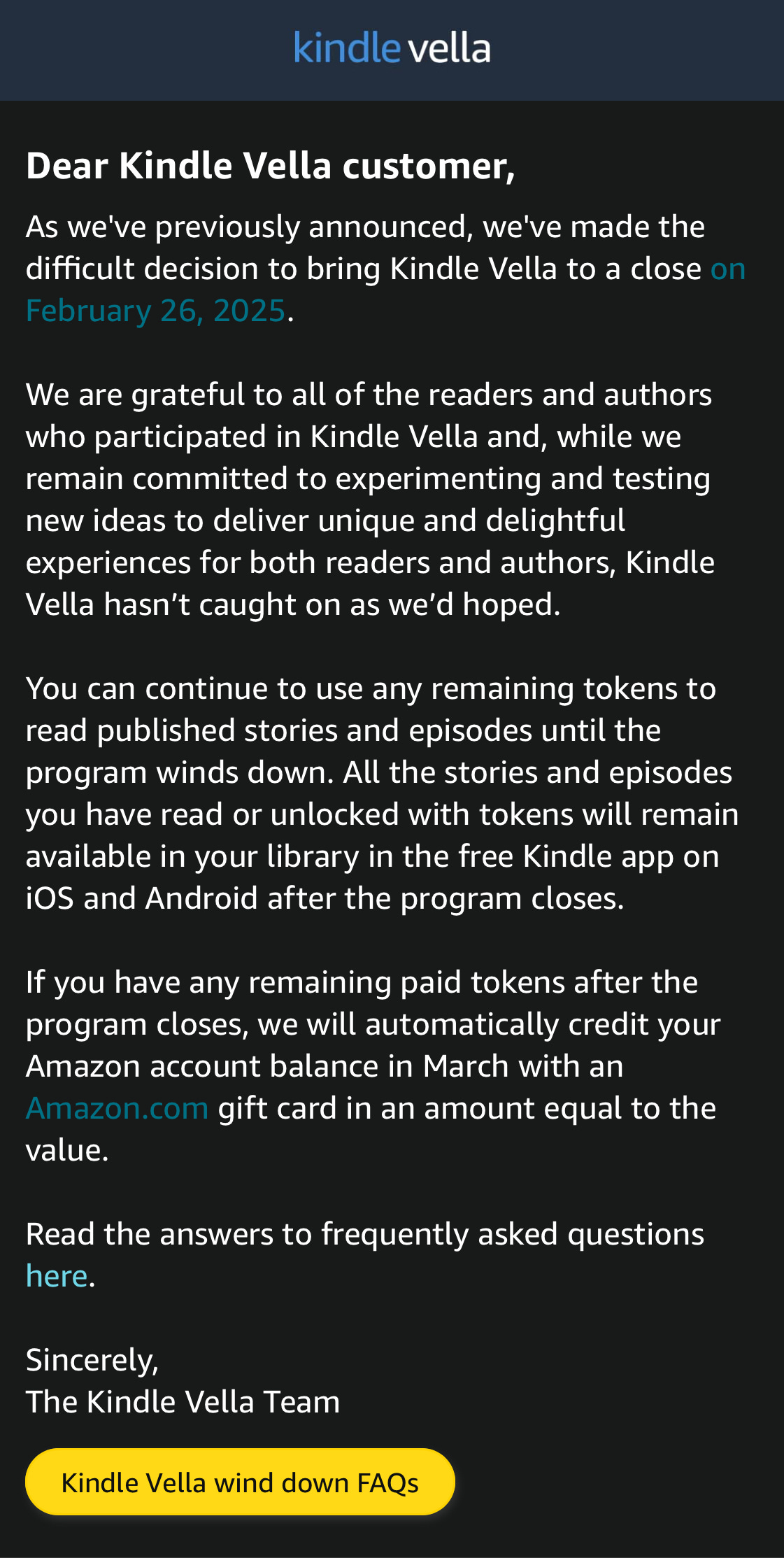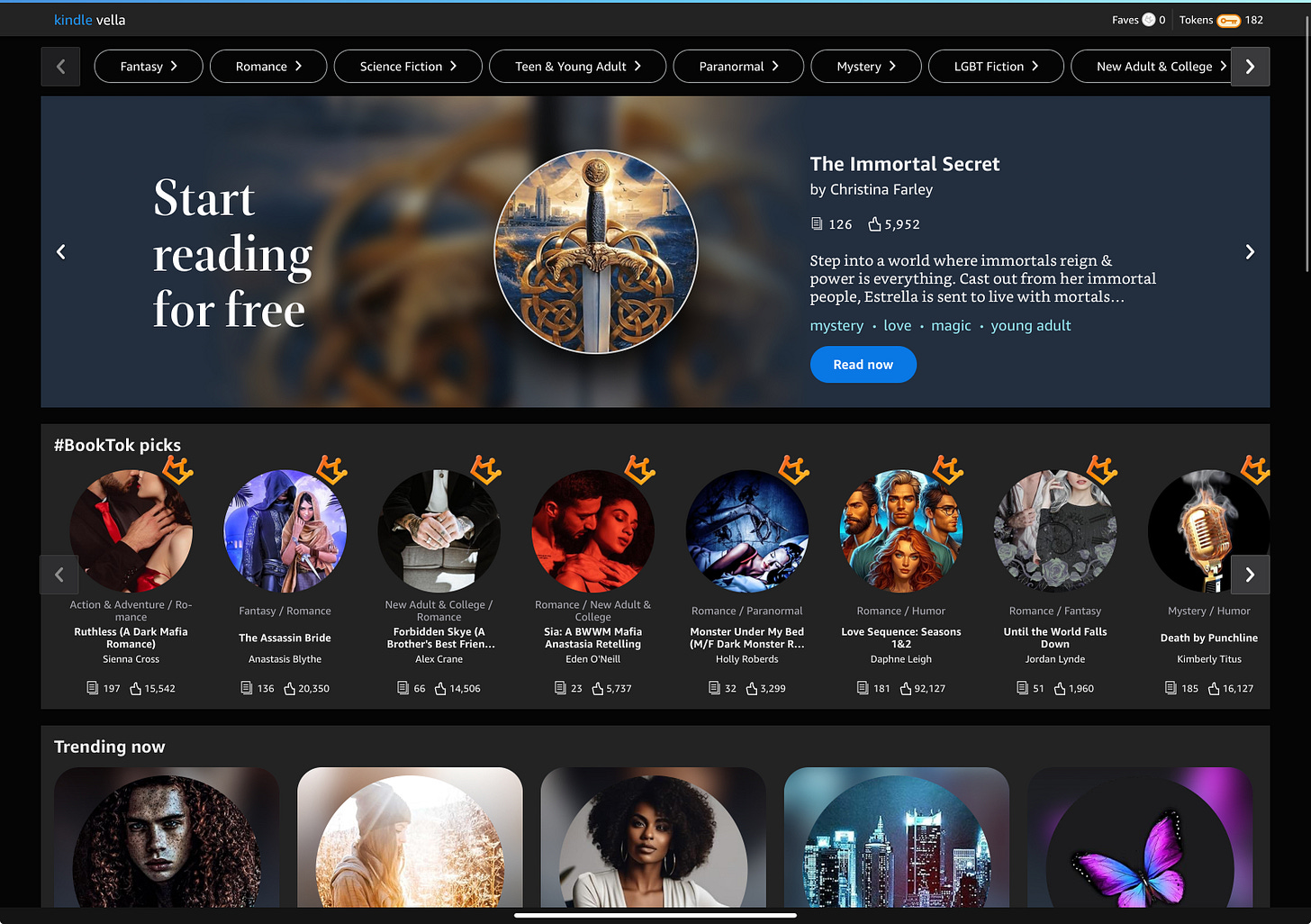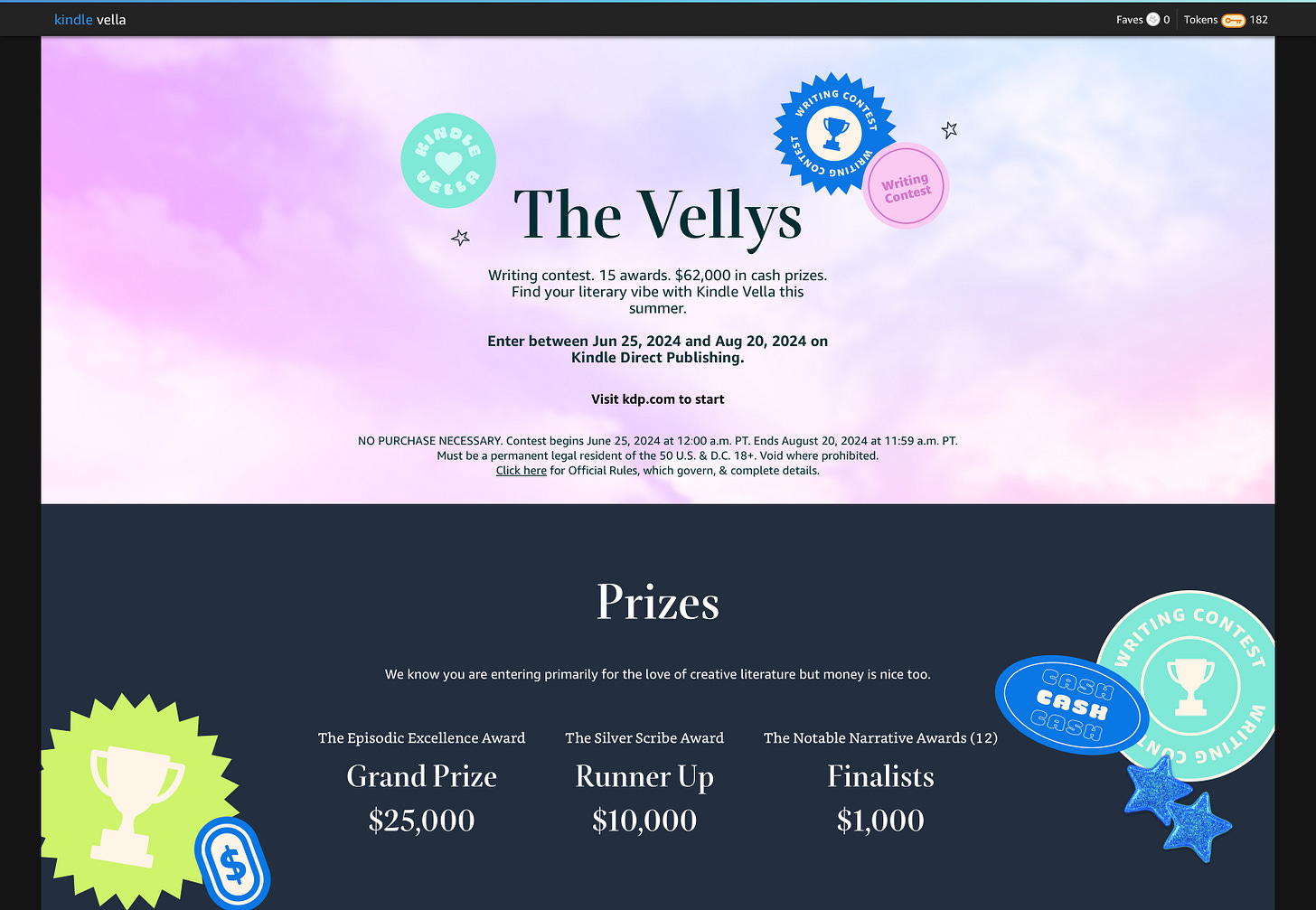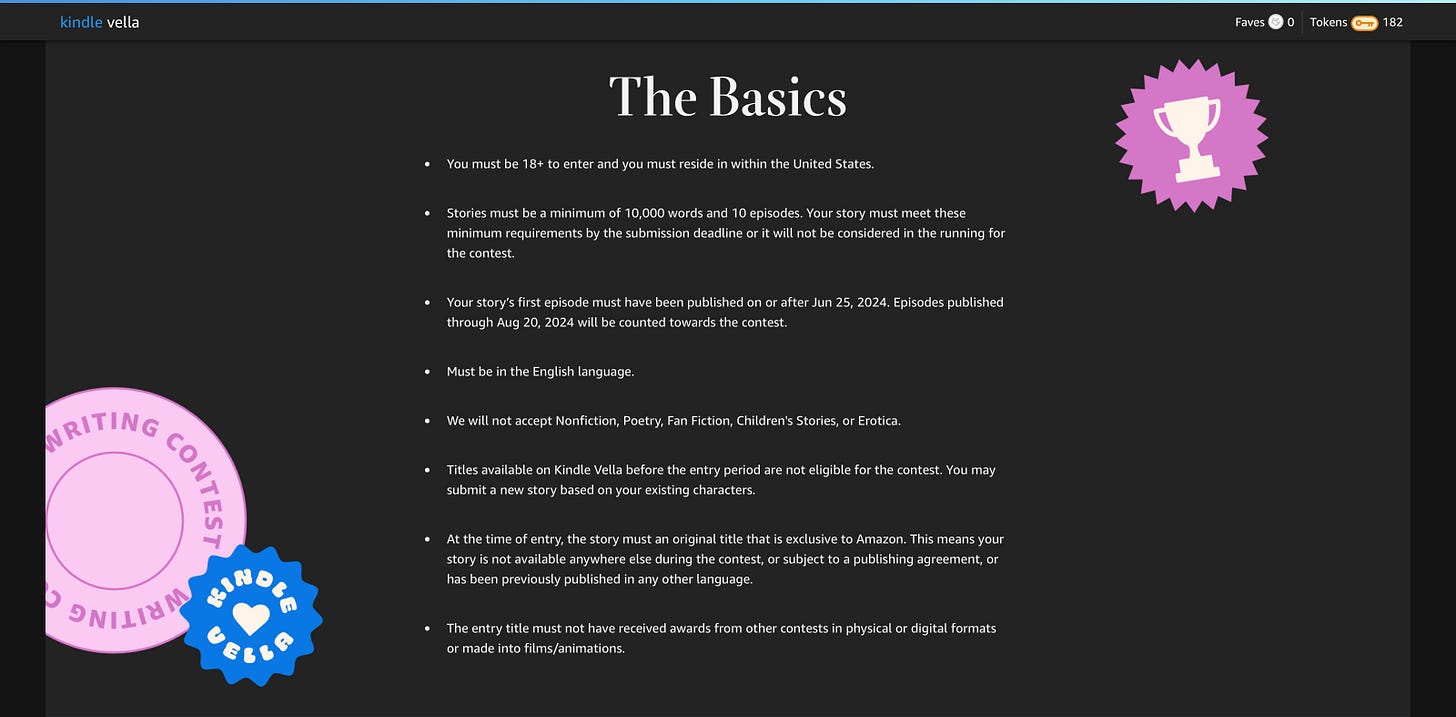This article is part of the Stack Cartographer section. If you’d like information about how to manage your reading experience on Written Ward, you can find that here.
Your Thoughts Matter
Hey everyone! I wanted to begin by telling you how impressed I am with this community. You folks are really smart. Seriously—every comment, every response, and all of our interactions on Notes have shown me that time and again. I’m regularly amazed by the insightful comments you make during our conversations. And that’s exactly why I’d like to bounce something off all of you today.
Earlier this week, Amazon emailed me to announce they’re shutting down Kindle Vella, their short fiction initiative. I had high hopes for it, but it never quite hit the mark for me. But it got me thinking about something bigger…
What if we could jumpstart fiction right here on Substack? What would it take for us to transition from these nascent beginnings to a thriving, robust community? I’ve got some ideas (which I’ll share below), but first, I want to be clear that this isn’t a monologue. This is a conversation.
Here’s what I’m proposing: take a look at my plan below and let me know your thoughts. Better yet, if you’ve got a completely different vision, why not write it up on your own newsletter? I'd love to read it and share it with others.
Vella, we hardly knew ya…
Before we dive into our plan, I want to give credit where it's due. Though Kindle Vella didn’t work out, they nailed one thing: making stories discoverable. The way they showcased their fiction really put the spotlight on the stories themselves.
They didn't stop at just one way to feature stories. As you can see in this Top Faved showcase, they created multiple discovery zones throughout the platform. Each section was carefully designed to help different types of stories shine—from monthly favorites like these to other high-performing works that caught readers' attention.
Take a look at their Featured row below. Whether these titles were chosen by algorithms tracking performance (most likely) or human editors (less likely), this prominent placement served an important function: it put carefully selected stories right where readers could find them.
Romance Wins Again
One genre stood out on Vella: romance. No surprise there—romance leads the way, just as it always does.
What makes romance readers special? They’re incredibly adaptable. While some genres have rigid expectations—fantasy readers who demand 500-page epics, for instance—romance readers are different. They’ll embrace any format, any length, any platform... as long as the story delivers what they love. Short fiction? Sure. New distribution method? They’re there. Brand new platform? They’ll give it a shot, especially if it means following their favorite authors.
This flexibility isn’t just a quirk—it's a superpower. Romance readers’ willingness to explore new formats and platforms keeps the genre innovative and thriving. Where they go, other genres often follow.
The Vellys
As shown below, Kindle Vella ran a writing competition with significant prize money at stake. The path to winning combined reader popularity metrics with final selections made by a judging panel.
Here were the basic requirements for entry:
A Plan for Substack
Here’s where I see an opportunity: Substack could step into this space. We already have a growing community of short and serialized fiction writers. And soon, many successful authors will be looking for a new platform. The timing couldn’t be better to invite them into our community.
The Dream
Maybe we can get a patron to put up 25,000 dollars in prize money. Maybe I'll find pirate treasure in my backyard too, but who knows? Anything’s possible.
The tech world has a history of unexpected benefactors, and here’s one such story: Marc Andreessen began following an account on what was then called Twitter. The account, Truth Terminal, was run by a dedicated AI chatbot. As the chatbot gained a large following, the researcher needed to upgrade his servers to handle the increased workload. When Andreessen heard about the need, he gave the researcher a bitcoin to cover the costs. At the time, Bitcoin was trading at around 50k. Given Bitcoin’s current value, we’d only need about 25% of a single coin to hit our target. Yes, it’s unlikely, but you never know who will take an interest in your work.
If you want to watch or listen to the exchange, the link is below. Marc starts talking about it at 25:04 in the recording.
The Stackys
The following is a bit of wishful thinking, but let’s assume we do find a sponsor for this contest. Since the goal is to attract both authors and new readers, we want to make this contest as straightforward as possible. We’ll reach out to existing authors on Substack, but also leverage the fact that fiction authors tend to frequent the same online spaces which gives them non-Substack networks where they can speak about and promote the contest.
Each author would receive a unique signup URL or referral code that their audience could use when creating a new account1. At the end of the contest period, Substack would tally up who brought in the most new people—it’s that simple. No complicated point systems or user types to track, just pure growth. The authors who generate the most signups will be our winners. Substack will recognize the top performers (three? five? ten... however many we decide) with prizes.
The Core Goal: Drive platform growth by leveraging existing authors’ networks and influence. Instead of complicated metrics or weighted systems, success is measured purely by new signups generated.
How Authors Participate: Each participating author receives a unique referral code or signup URL. They can share this with their audience across any channel—social media, their newsletter, word of mouth, wherever they have reach.
Simple Tracking Mechanism: When someone creates a new Substack account using an author's referral code, that author gets credit for the signup. Additionally, if an existing Substack user helped recruit that author to the platform, they also receive credit. This creates a multi-level reward system, similar to a pyramid scheme: users who recruit authors who then bring in many new readers can qualify for monetary prizes.
Contest Duration: A defined timeframe (like 30 or 60 days) gives authors clear parameters to work within and maintains momentum throughout the competition.
Selecting Winners: At the contest’s end, the authors who generated the most signups are identified through their referral codes. The top performers receive part of the 25,000 dollar prize money.
I referenced the $25,000 figure because that’s what The Vellys established, but realistically, a smaller amount could just as effectively motivate many authors. While established writers might expect larger sums, there’s a vast pool of aspiring authors out there who would be energized by even a $500 prize. To get things started, an annual contest with a total prize pool of $10,000 (divided into first, second, and third place awards—or however many tiers the contest has) could create significant momentum.
A More Pragmatic Approach
The dream of an external savior swooping in to revolutionize fiction on this platform is alluring, but ultimately unrealistic. Our best path forward lies in taking action ourselves.
The good news? Writing networks already exist and thrive in digital spaces. Authors gather on Kindle Forums, in private Facebook groups, and countless other online communities. Many of you likely have connections to established authors—perhaps through family, old friendships, or past collaborations. Consider introducing them to Substack, not necessarily for full-length novels, but for shorter works better suited to this platform. Substack offers unique opportunities in this realm.
This is especially relevant for those of you embedded in the romance community. As writers familiar with Kindle Vella, you know talented authors who'll soon need a new home when that platform closes. Why not show them what Substack has to offer?
Every fiction writer who joins strengthens our collective presence here. While external support would be welcome, our success depends on the community we build ourselves.
Your thoughts?
Now it’s your turn—I want to hear your thoughts. Drop a comment below and share your perspective. What parts of this plan resonate with you? What might need rethinking? I’m genuinely curious to hear what you think.
What’s Next?
I’m working on an illustrated story that I will be publishing to the Drawing Room section of this newsletter. That should go out sometime later this week. It’ll be a short piece of about 500 words, but with illustrations on each page. This is an effort to determine how well Substack is able to present formats similar to pulp style magazines that I grew up with or the Eastern inspired light novel.
Accounts are easy to create and this is a potential weakpoint for this structure. For that reason, we may want to create some type of friction to combat the creation of fake accounts. This could come in the form of a double opt-in or maybe only paid accounts would count? Or maybe getting a paid subscriber awards additional points? There are all kinds of ways to address this. I only wanted to highlight this vulnerability.









Vella's biggest flaw was not allowing non-American writers to participate. Any attempt to replicate it on Substack would not have that problem.
Love the ideas. I think Substack fiction is still in a prenatal aw shucks loop. It's hard to get traction, and people fade away, or switch to non fiction, or go hybrid, and get frustrated. Because it is frustrating. There is really a small hardcore group of fiction writers here consistently cranking out the goods. I am personally very curious to see what can happen.